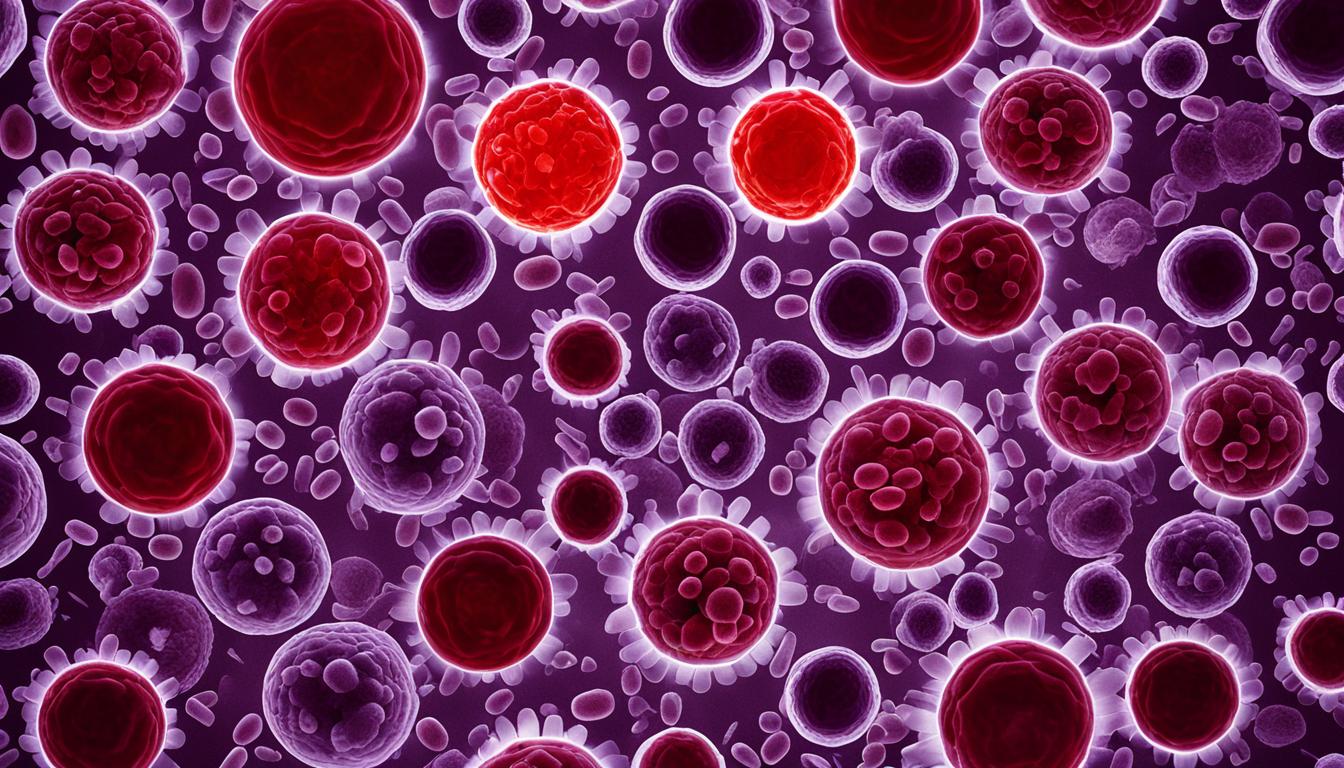Cryoglobulinemia is a rare blood disorder with abnormal proteins called cryoglobulins. These proteins can gather and block blood vessels. This blockage can cause various symptoms and health issues. The main cause of cryoglobulinemia is unclear, but it often links to autoimmune diseases, Rheumatoid arthritis, and Hepatitis C.
Doctors diagnose cryoglobulinemia with blood tests. Special tests detect cryoglobulins, confirming the condition. Knowing the underlying cause helps in choosing the best treatment.
For treatment, the doctor looks at the root cause and how severe the symptoms are. Sometimes, no treatment is needed if the person shows no symptoms. Yet, treatments exist to help ease symptoms if they’re present.
For patients with conditions like Hepatitis C, antiviral medications might help. Drugs that dampen the immune system, such as corticosteroids, can reduce swelling. Severe cases might need plasmapheresis to filter cryoglobulins from the blood. In some cases, patients might benefit from immunoglobulin replacement therapy.
Stem cell therapy is a new approach that looks promising for cryoglobulinemia. Stem cells can replace or repair damaged cells and help regulate immunity. The goal is a treatment that offers lasting relief and improves life quality. But, more research is essential to confirm the effectiveness and safety of this therapy.
Key Takeaways:
- Cryoglobulinemia is a rare blood disorder characterized by abnormal proteins called cryoglobulins in the blood.
- The exact cause of cryoglobulinemia is often unknown, but it can be associated with autoimmune diseases, Rheumatoid arthritis, and Hepatitis C.
- The diagnosis of cryoglobulinemia involves blood tests to detect the presence of cryoglobulins and identify the underlying cause.
- Treatment options for cryoglobulinemia depend on the underlying cause and may include medications, plasmapheresis, or immunoglobulin replacement therapy.
- Stem cell therapy is being researched as a potential treatment for cryoglobulinemia to replace damaged cells and regulate the immune system.
Symptoms and Diagnosis of Cryoglobulinemia
Cryoglobulinemia brings a range of symptoms, different for each person. These come from abnormal proteins, cryoglobulins, grouping in blood vessels. Common symptoms include
- Skin manifestations: It can lead to a rash, purpura, livedo reticularis, and Raynaud’s phenomenon.
- Joint and muscle symptoms: You may feel joint pain and muscle weakness.
- Kidney problems: It might cause kidney issues, such as proteinuria and glomerulonephritis.
- Neurological symptoms: It can impact the nervous system, causing numbness or weakness.
Symptoms vary in type and severity among those with cryoglobulinemia. Not everyone has the same symptoms.
Healthcare pros use various tests to diagnose it. These include
- Blood tests: A simple blood test checks for cryoglobulins.
- Additional testing: To find the cause, more tests may be done. This can include looking for autoimmune diseases and viral infections like Hepatitis C.
After understanding symptoms and running tests, doctors can diagnose cryoglobulinemia. Then, they develop the best treatment plan for the individual.
| Symptoms | Common Manifestations |
|---|---|
| Skin manifestations | Rash, purpura, livedo reticularis, Raynaud’s phenomenon |
| Joint and muscle symptoms | Joint pain, muscle weakness |
| Kidney problems | Proteinuria, glomerulonephritis |
| Neurological symptoms | Numbness, tingling sensations, weakness |
Treatment Options for Cryoglobulinemia
The treatment for cryoglobulinemia depends on why it happens and how bad the symptoms are. If there are no symptoms, no treatment might be needed. But if there are, drugs that lower the immune response and help with swelling might be used.
If the cause is a virus like Hepatitis C, antiviral drugs could be a part of the treatment plan. For those with more serious symptoms or if organs are affected, doctors might suggest using plasmapheresis or getting immunoglobulin therapy.
Doctors are also looking into using stem cell therapy for cryoglobulinemia. This treatment aims to repair immune system issues by replacing damaged cells. But, more study is required to be sure it’s safe and works well for this condition.

